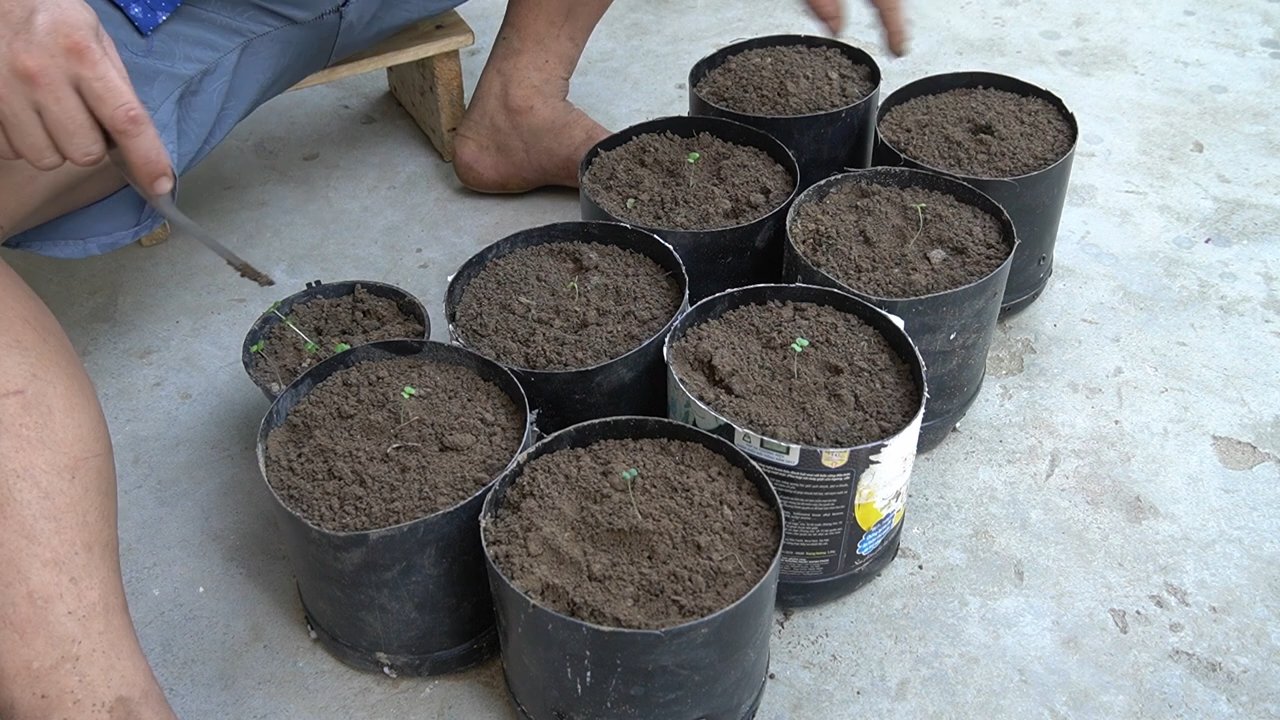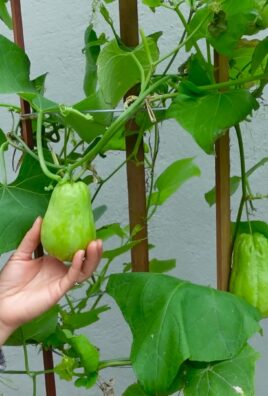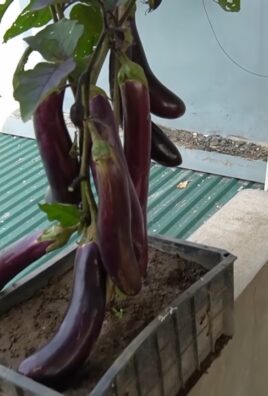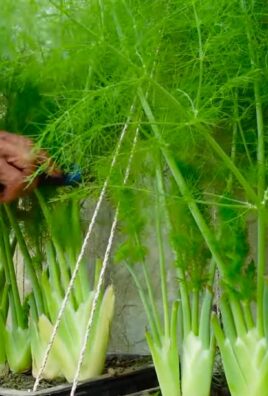DIY balcony lettuce planter: Imagine stepping onto your balcony and snipping fresh, crisp lettuce leaves for your salad, sandwich, or even a quick snack. No more trips to the grocery store for wilted greens! This isn’t just a dream; it’s an achievable reality with a simple, rewarding DIY project. For centuries, people have cultivated small gardens in limited spaces, from window boxes in bustling cities to rooftop gardens in ancient civilizations. This connection to nature, even in the most urban environments, is deeply ingrained in our history.
But why should *you* embark on this leafy adventure? Well, beyond the sheer joy of growing your own food, a DIY balcony lettuce planter offers a multitude of benefits. Think about it: you’re reducing your carbon footprint by cutting down on transportation, ensuring you have access to pesticide-free produce, and saving money in the long run. Plus, gardening is incredibly therapeutic! It’s a chance to de-stress, connect with nature, and nurture something from seed to harvest. I’m going to show you how easy it is to create your own thriving lettuce patch, even if you have limited space and zero gardening experience. Get ready to transform your balcony into a green oasis!

DIY Balcony Lettuce Planter: Fresh Greens at Your Fingertips!
Hey there, fellow balcony gardeners! Are you dreaming of fresh, crisp lettuce right outside your door? Well, you’ve come to the right place! I’m going to walk you through building your very own balcony lettuce planter. It’s easier than you think, and the reward of homegrown salad is totally worth it. Let’s get started!
What You’ll Need: The Supply List
Before we dive in, let’s gather our supplies. This project is pretty flexible, so feel free to adapt it to what you have available or what fits your balcony space best.
* Container: This is the heart of our planter. You can use a variety of things:
* A large plastic storage bin (at least 12 inches deep is ideal).
* A repurposed wooden crate (make sure it’s untreated wood or lined with plastic).
* A long, rectangular planter box specifically designed for balconies.
* Even a few smaller pots grouped together can work!
* Drill with Drill Bits: We’ll need this to create drainage holes.
* Potting Soil: Choose a good quality potting mix that’s well-draining. Avoid using garden soil, as it can compact too much in containers.
* Lettuce Seeds or Seedlings: Pick your favorite varieties! Loose-leaf lettuces like Romaine, Buttercrunch, and Salad Bowl are great for continuous harvesting.
* Landscape Fabric (Optional): This is useful for lining wooden crates to prevent the soil from escaping and to protect the wood.
* Measuring Tape or Ruler: For accurate measurements.
* Gloves: To keep your hands clean.
* Watering Can or Hose: For watering your lettuce.
* Slow-Release Fertilizer (Optional): This can give your lettuce a boost.
* Small Trowel or Shovel: For moving soil.
* Scissors or Utility Knife: For cutting landscape fabric (if using).
Step-by-Step Instructions: Building Your Lettuce Oasis
Okay, now for the fun part! Let’s build this planter.
1. Preparing Your Container
* Clean Your Container: If you’re using a repurposed container, give it a good scrub with soap and water to remove any dirt or debris.
* Drill Drainage Holes: This is crucial! Lettuce needs good drainage to prevent root rot.
* If you’re using a plastic bin or planter box, drill several holes (about 1/2 inch in diameter) in the bottom. Space them about 4-6 inches apart.
* If you’re using a wooden crate, you can either drill holes directly into the bottom or line the crate with landscape fabric (see step 2) and then drill holes through the fabric and wood.
* Consider Container Size: If you’re using a very large container, think about its weight when filled with soil. Make sure your balcony can handle the load. You might want to place it near a supporting wall.
2. Lining Your Container (If Using a Wooden Crate)
* Measure and Cut: Measure the inside dimensions of your wooden crate. Cut the landscape fabric to fit, leaving a few extra inches on each side.
* Line the Crate: Place the fabric inside the crate, overlapping the edges over the top. This will create a barrier between the soil and the wood.
* Secure the Fabric: You can use staples or tacks to secure the fabric to the inside of the crate. Make sure they are rust-resistant.
* Trim Excess Fabric: Once the fabric is secure, trim off any excess fabric that’s hanging over the edge.
3. Filling Your Container with Soil
* Add Potting Soil: Now it’s time to fill your container with potting soil. Leave about 2-3 inches of space at the top of the container.
* Don’t Compact the Soil: Gently pat down the soil to remove any air pockets, but don’t compact it too much. Lettuce roots need to breathe.
* Consider Adding Fertilizer: If you’re using a slow-release fertilizer, mix it into the top layer of soil according to the package directions.
4. Planting Your Lettuce
* Choose Your Planting Method: You can either start with seeds or seedlings. Seedlings will give you a head start, but seeds are more economical.
* Planting Seeds:
* Read the seed packet for specific instructions on spacing and depth. Generally, lettuce seeds should be planted about 1/4 inch deep.
* Sprinkle the seeds evenly over the surface of the soil.
* Gently cover the seeds with a thin layer of soil.
* Water gently to moisten the soil.
* Planting Seedlings:
* Dig small holes in the soil, spacing them according to the variety of lettuce you’re planting (usually 6-8 inches apart).
* Gently remove the seedlings from their containers.
* Place the seedlings in the holes and cover the roots with soil.
* Water gently to moisten the soil.
* Succession Planting: To ensure a continuous harvest, consider planting new seeds or seedlings every 2-3 weeks.
5. Watering and Caring for Your Lettuce
* Water Regularly: Lettuce needs consistent moisture to thrive. Water deeply whenever the top inch of soil feels dry to the touch.
* Avoid Overwatering: Soggy soil can lead to root rot. Make sure your container has good drainage.
* Water in the Morning: Watering in the morning allows the leaves to dry out during the day, which can help prevent fungal diseases.
* Fertilize (If Needed): If your lettuce starts to look pale or yellow, you may need to fertilize it. Use a balanced liquid fertilizer diluted to half strength.
* Protect from Pests: Keep an eye out for pests like aphids and slugs. You can use insecticidal soap or diatomaceous earth to control them.
* Provide Shade (If Necessary): In hot climates, lettuce can bolt (go to seed) prematurely. Provide some shade during the hottest part of the day to prevent this.
Harvesting Your Lettuce: The Best Part!
* Harvest Loose-Leaf Lettuce: You can start harvesting loose-leaf lettuce when the leaves are about 4-6 inches long. Simply snip off the outer leaves with scissors, leaving the inner leaves to continue growing.
* Harvest Head Lettuce: Head lettuce is ready to harvest when the head is firm and well-formed. Cut the head off at the base of the plant.
* Harvest in the Morning: Lettuce is best harvested in the morning, when the leaves are crisp and cool.
* Store Your Lettuce: Store your harvested lettuce in the refrigerator in a plastic bag or container. It will stay fresh for several days.
Troubleshooting: Common Lettuce Problems and Solutions
* Yellowing Leaves: This can be caused by overwatering, underwatering, nutrient deficiencies, or pests. Check the soil moisture and fertilize if necessary.
* Bolting (Going to Seed): This is caused by hot weather. Provide shade and water regularly to prevent bolting.
* Pests: Aphids, slugs, and snails can damage lettuce leaves. Use insecticidal soap, diatomaceous earth, or handpick the pests.
* Root Rot: This is caused by overwatering and poor drainage. Make sure your container has good drainage and avoid overwatering.
* Slow Growth: This can be caused by nutrient deficiencies, poor soil, or lack of sunlight. Fertilize regularly and make sure your lettuce is getting enough sunlight.
Choosing the Right Lettuce Varieties for Your Balcony
Not all lettuce varieties are created equal, especially when it comes to container gardening. Here are a few of my favorites that thrive in pots:
* Black Seeded Simpson: This is a classic loose-leaf lettuce that’s easy to grow and produces abundant leaves. It’s also heat-tolerant, making it a good choice for warmer climates.
* Buttercrunch: A buttery-flavored butterhead lettuce that forms small, compact heads. It’s perfect for small spaces.
* Tom Thumb: A miniature butterhead lettuce that’s ideal for containers. It’s very compact and matures quickly.
* Red Sails: A beautiful red-leaf lettuce that adds color to your balcony garden. It’s also very nutritious.
* Romaine: While Romaine typically grows larger, you can still grow it in a container if you choose a smaller variety or harvest the outer leaves regularly.
Tips for Maximizing Your Lettuce Harvest
* Choose the Right Location: Lettuce needs at least 4-6 hours of sunlight per day. Choose a sunny spot on your balcony.
* Use High-Quality Pot

Conclusion
So, there you have it! Creating your own DIY balcony lettuce planter isn’t just a fun project; it’s a gateway to fresh, delicious salads right outside your door. We’ve walked you through the simple steps, highlighting how accessible and rewarding this endeavor can be. Forget those wilted, overpriced greens from the supermarket. Imagine stepping onto your balcony, snipping off exactly what you need, and enjoying the vibrant flavors of homegrown lettuce.
This isn’t just about convenience; it’s about control. You know exactly what’s going into your lettuce – no pesticides, no questionable fertilizers, just good old-fashioned sunshine, water, and care. Plus, the satisfaction of nurturing something from seed to salad is incredibly fulfilling. It’s a small act of self-sufficiency that can bring a surprising amount of joy.
But the beauty of this DIY project lies in its adaptability. Feel free to experiment with different types of lettuce. Romaine, butterhead, loose-leaf – the possibilities are endless! Consider adding companion plants like marigolds to deter pests or herbs like basil to enhance the flavor of your lettuce. You can also adjust the size and shape of your planter to fit your balcony space and aesthetic. A vertical planter can maximize space, while a repurposed container can add a touch of rustic charm.
Don’t be afraid to get creative with your drainage system. While we suggested drilling holes, you could also use a layer of gravel or broken pottery at the bottom of your container. The key is to ensure that excess water can escape, preventing root rot and keeping your lettuce healthy.
And speaking of healthy lettuce, remember that consistent watering and adequate sunlight are crucial. Check the soil moisture regularly and water when the top inch feels dry. Position your planter in a spot that receives at least six hours of sunlight per day. If your balcony is particularly windy, consider providing some shelter to protect your delicate lettuce leaves.
This DIY balcony lettuce planter is more than just a gardening project; it’s an investment in your health, your well-being, and your connection to nature. It’s a simple way to bring a touch of green into your urban environment and enjoy the freshest, most flavorful salads imaginable.
We truly believe that anyone can succeed with this project, regardless of their gardening experience. All it takes is a little bit of effort, a few basic materials, and a willingness to learn. So, gather your supplies, follow our instructions, and get ready to enjoy the fruits (or rather, the leaves) of your labor.
We’re confident that you’ll be amazed at how easy and rewarding it is to grow your own lettuce. And we can’t wait to hear about your experiences! Share your photos, tips, and questions in the comments below. Let’s create a community of balcony gardeners, sharing our knowledge and inspiring each other to grow our own food. Happy planting!
Frequently Asked Questions (FAQ)
What kind of container is best for a DIY balcony lettuce planter?
The best container for your DIY balcony lettuce planter depends on your space and aesthetic preferences. However, there are a few key considerations. First, ensure the container has adequate drainage. Lettuce needs well-draining soil to prevent root rot. Second, consider the size of the container. Lettuce doesn’t need a very deep container, but it does need enough space for its roots to spread. A container that is at least 6 inches deep and wide is generally sufficient.
You can use a variety of materials for your container, including plastic pots, terracotta pots, wooden boxes, or even repurposed containers like old buckets or crates. Just make sure the container is clean and free of any harmful chemicals. If you’re using a repurposed container, drill drainage holes in the bottom.
For small balconies, consider using vertical planters or hanging baskets to maximize space. These options allow you to grow lettuce without taking up valuable floor space.
How often should I water my balcony lettuce planter?
Watering frequency depends on several factors, including the weather, the type of container you’re using, and the type of soil. As a general rule, you should water your lettuce when the top inch of soil feels dry to the touch. During hot, dry weather, you may need to water daily, while during cooler, wetter weather, you may only need to water every few days.
When watering, water deeply and evenly, ensuring that the entire root zone is moistened. Avoid overwatering, as this can lead to root rot. It’s also best to water in the morning, so the leaves have time to dry before nightfall, which can help prevent fungal diseases.
A good way to check if your lettuce needs water is to stick your finger into the soil. If the soil feels dry, it’s time to water. You can also use a moisture meter to get a more accurate reading.
What kind of soil should I use for my lettuce planter?
Lettuce prefers well-draining, fertile soil that is rich in organic matter. A good potting mix specifically designed for vegetables is a great option. You can also create your own soil mix by combining equal parts of compost, peat moss, and perlite or vermiculite.
Compost provides essential nutrients and improves soil drainage. Peat moss helps retain moisture, while perlite or vermiculite improves aeration. Avoid using garden soil in your container, as it can be too heavy and may not drain well.
Before planting, amend the soil with a slow-release fertilizer to provide your lettuce with a steady supply of nutrients. You can also add a layer of compost to the top of the soil every few weeks to replenish nutrients.
How much sunlight does lettuce need?
Lettuce needs at least six hours of sunlight per day to thrive. However, it can tolerate partial shade, especially during the hottest part of the day. If your balcony is particularly sunny, consider providing some shade during the afternoon to prevent the lettuce from wilting.
If your balcony doesn’t receive enough sunlight, you can supplement with artificial light. Grow lights are a great option for indoor gardening and can provide your lettuce with the light it needs to grow.
What are some common pests and diseases that affect lettuce, and how can I prevent them?
Lettuce is susceptible to a variety of pests and diseases, including aphids, slugs, snails, and fungal diseases like powdery mildew. To prevent these problems, start by choosing disease-resistant varieties of lettuce.
Regularly inspect your plants for signs of pests or diseases. If you spot any problems, take action immediately. Aphids can be washed off with a strong stream of water, while slugs and snails can be hand-picked or trapped.
To prevent fungal diseases, ensure that your lettuce has good air circulation and avoid overwatering. You can also apply a fungicide if necessary. Companion planting with marigolds can also help deter pests.
Can I grow lettuce indoors?
Yes, you can grow lettuce indoors, but you’ll need to provide it with adequate light. A sunny windowsill that receives at least six hours of sunlight per day is ideal. If you don’t have a sunny windowsill, you can use grow lights to supplement the natural light.
When growing lettuce indoors, it’s important to choose a well-draining potting mix and water regularly. You’ll also need to fertilize your lettuce every few weeks to provide it with the nutrients it needs to grow.
What are some good companion plants for lettuce?
Companion planting is the practice of growing different plants together to benefit each other. Some good companion plants for lettuce include:
* Marigolds: Deter pests like aphids and nematodes.
* Basil: Repels pests and improves the flavor of lettuce.
* Carrots: Their roots loosen the soil, benefiting lettuce.
* Radishes: Act as a trap crop for flea beetles.
* Garlic: Deters pests and has antifungal properties.
Avoid planting lettuce near fennel, as it can inhibit its growth.
How long does it take for lettuce to grow?
Lettuce typically takes 30-60 days to mature, depending on the variety. Loose-leaf lettuce can be harvested earlier, as you can simply snip off the outer leaves as needed. Head lettuce takes longer to mature and needs to be harvested when the head is firm and well-formed.
To extend your harvest, sow seeds every few weeks. This will ensure that you have a continuous supply of fresh lettuce throughout the growing season.
How do I harvest lettuce?
The way you harvest lettuce depends on the type you are growing. For loose-leaf lettuce, you can simply snip off the outer leaves as needed, leaving the inner leaves to continue growing. This allows you to harvest lettuce over a longer period of time.
For head lettuce, you’ll need to harvest the entire head at once. To do this, cut the head off at the base of the plant with a sharp knife.
Harvest lettuce in the morning, when the leaves are crisp and cool. Avoid harvesting during the heat of the day, as the leaves can wilt quickly.
How do I store harvested lettuce?
To store harvested lettuce, wash it thoroughly and dry it with a salad spinner or paper towels. Store the lettuce in a plastic bag or container in the refrigerator. Lettuce will typically last for about a week in the refrigerator.
To keep lettuce crisp, you can wrap it in a damp paper towel before storing it in the refrigerator. You can also add a few drops of lemon juice to the water when washing the lettuce to help prevent browning




Leave a Comment